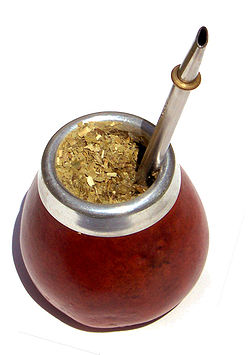
A national drink is a distinct beverage that is strongly associated with a particular country, and can be part of their national identity and self-image. These drinks can be either alcoholic or non-alcoholic. Alcoholic national drinks might be spirits consumed straight (like vodka in Russia), but more often, they are mixed drinks (such as caipirinhas in Brazil and Singapore Slings in Singapore), beer, or wine. Non-alcoholic national drinks include Coca-Cola in the United States, boba tea in Taiwan, and Thai iced tea in Thailand.
Contents
- America
- North
- Central and South
- Europe
- Africa
- Asia
- East
- Southeast
- South
- Central
- West
- Oceania
- Gallery
- See also
- References
Several factors can qualify a beverage as a national drink:
- Regional Ingredients and Popularity: The drink is made from locally sourced ingredients and is commonly consumed, such as mango lassi in India, which uses dahi, a traditional yogurt. [2]
- Unique Local Ingredients: The beverage contains an exotic ingredient that is unique to the region.
- Cultural Tradition: The drink plays a significant role in festive traditions and cultural heritage.
- Official Promotion: The country actively promotes the drink as a national symbol.
Choosing a single national drink can be challenging for some countries due to their diverse cultures and populations, such as Mexico or India. Conversely, some beverages, like pisco sour, are claimed by more than one country—both Peru and Chile, in this case.
Below is a list of national drinks categorized within geo-political regions modified from the United Nations' five "regional groups". This list generally excludes moonshines or illicitly produced alcoholic beverages.































